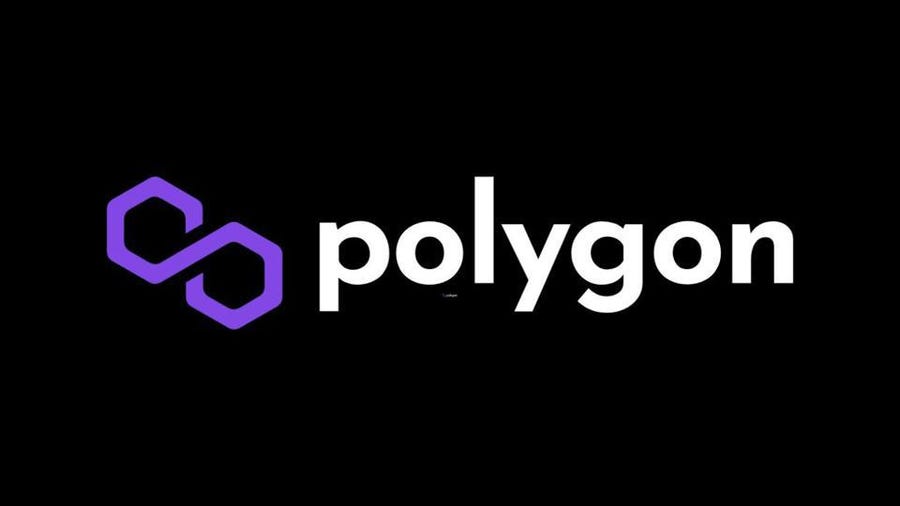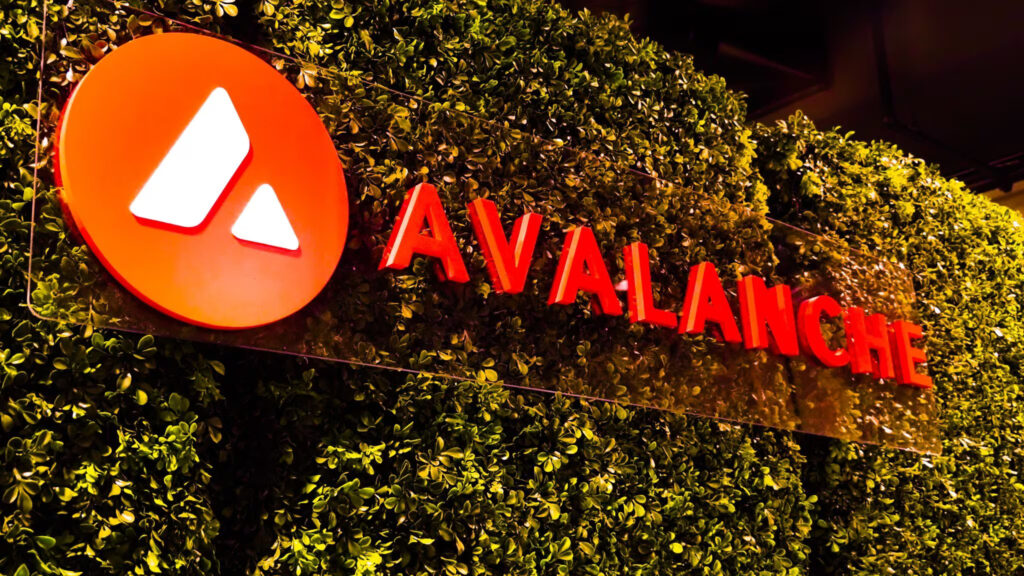Grayscale’s Bitcoin Trust (GBTC) has displayed a ray of optimism as its outflows have recently slowed for the second consecutive day, hinting that the massive Bitcoin selloff might be nearing its conclusion.
Data from BitMEX Research indicates that on January 24th, GBTC outflows amounted to $429 million, marking the smallest daily outflow since the inception of Grayscale’s spot Bitcoin ETF on January 11th.
This also signifies a 33% reduction compared to the outflows observed at the beginning of the week on January 22nd.
Eric Balchunas, an ETF analyst at Bloomberg, observed on January 25th that GBTC outflows appear to be on a downward trend, though he acknowledged that the figure is still considerable.
He pointed out that there remain several uncertainties regarding when the “mass exodus” from GBTC will come to an end.
Over the course of nine trading days, GBTC has seen a significant outflow of 106,092 BTC, equivalent to around $4.4 billion.
However, it is crucial to note that a slowdown in daily outflows does not necessarily indicate that GBTC’s “bleeding” has ceased or significantly slowed down.
Balchunas had previously estimated that GBTC would need to lose approximately 25% of its outstanding shares before the outflows come to a halt.
READ MORE: Avalanche Foundation Sets Criteria for Memecoins Seeking Share of $100 Million Fund
Adding to the complexity, Arkham Intelligence, a blockchain tracking firm, has cautioned against misinterpreting the GBTC transaction data displayed on its platform.
In a January 24th post, Arkham clarified that the outflow data for GBTC exhibited on its platform is divided between Coinbase Prime and new GBTC custody addresses.
Consequently, not all of the BTC being transferred from Grayscale’s Bitcoin Trust is necessarily being redeemed. This is due to the inherent structure of Bitcoin transactions, which often split outputs among multiple addresses.
Arkham further explained that “GBTC custody wallets frequently send to multiple addresses,” meaning that a portion of the BTC sent in a transaction might be directed to an address different from the main recipient indicated in the transaction panel.
In summary, while the recent slowdown in GBTC outflows provides a glimmer of hope for investors, it’s essential to approach the data with caution and consider the complexities of Bitcoin transactions, as highlighted by Arkham Intelligence.
The future trajectory of GBTC and its outflows remains uncertain, and investors will likely continue to monitor the situation closely.
Polygon Labs, a developer of Ethereum-scaling solutions, has unveiled a groundbreaking protocol called AggLayer that seeks to revolutionize the blockchain ecosystem.
In a blog post released on January 24th, the company announced its plan to launch AggLayer in February, with the primary objective of bridging the divide within the blockchain landscape, ultimately creating a seamless network that resembles a single chain.
AggLayer’s core innovation lies in its ability to aggregate zero-knowledge proofs (ZK-proofs) from various blockchains.
This novel approach enables developers to seamlessly connect both layer 1 and layer 2 blockchains, effectively merging them into a unified network.
For everyday users, this promises a transformative experience akin to the simplicity of using the internet.
No longer will users be burdened with the complexities and inconveniences of frequent bridging between different chains.
Polygon Labs illustrated the potential of AggLayer through a practical use case.
They described a scenario where a user on Ethereum’s layer-2 chain X1 holds the cryptocurrency Dai and wishes to purchase a nonfungible token on Polygon’s zero-knowledge Ethereum Virtual Machine.
From the end-user perspective, this process would feel like interacting with a single chain, eliminating the need to comprehend the intricacies of accessing multiple chains.
READ MORE: Avalanche Foundation Sets Criteria for Memecoins Seeking Share of $100 Million Fund
The driving force behind Polygon Labs’ development of AggLayer is their conviction that blockchain networks should evolve into a unified, highly scalable ecosystem akin to the internet.
Currently, these networks are characterized by fragmentation and a lack of interoperability, resulting in subpar user experiences and scalability limitations.
AggLayer, as Polygon Labs contends, will address these issues and bring about substantial improvements over the existing monolithic and modular blockchain architectures.
Monolithic blockchains, typified by Bitcoin, consolidate critical functions like transactions, settlements, and data availability within a single layer.
On the other hand, modular chains, exemplified by post-Merge Ethereum, distribute these functions across multiple layers to enhance efficiency.
AggLayer, through its innovative use of ZK technology, aims to amalgamate the advantages of both integrated (monolithic) and modular architectures.
The initial release of AggLayer is scheduled for February, with a subsequent version slated for later in the year.
Polygon Labs has revealed that the second version will introduce support for asynchronous cross-chain transactions, further expanding the protocol’s capabilities and potential impact on the blockchain landscape.
As the crypto community eagerly anticipates the launch, AggLayer appears poised to bring about a new era of cohesion and scalability within the blockchain world.
The Federal Court of Canada has delivered a significant ruling, deeming an emergency law utilized by the Canadian government to halt the flow of funds and cryptocurrency to protesting truckers as unreasonable and unconstitutional.
On January 23rd, Justice Richard Mosley unequivocally asserted, “There was no national emergency justifying the invocation of the Emergencies Act, and the decision to do so was therefore unreasonable.”
In February 2022, Prime Minister Justin Trudeau’s administration deployed the law for the first time to freeze funds, including cryptocurrencies, donated to truckers who were protesting COVID-19 restrictions. The court found this action to be in violation of the constitution.
These protesters, part of the “Freedom Convoy,” had used their trucks to block streets in Ottawa, Canada’s capital, in opposition to a mandate requiring truck drivers crossing the Canada-United States border to be fully vaccinated against COVID-19.
The government had argued that invoking the Emergencies Act was essential due to the protests being deemed an illegal occupation.
Various organizations, including the Canadian Civil Liberties Association (CCLA) and the Canadian Constitution Foundation, challenged the government’s use of this emergency law to freeze funds, contending that it was unnecessary and unconstitutional.
The CCLA hailed the decision as a “clear and critical precedent for every future government.”
Justice Mosley emphasized that the Emergencies Act should only be invoked as a last resort, stating, “The government cannot invoke the Emergencies Act because it is convenient, or because it may work better than other tools at their disposal or available to the provinces.”
Finance Minister Chrystia Freeland announced the government’s intention to appeal the ruling.
Cryptocurrency played a pivotal role in financing the 2022 trucker protests, with protesters believed to have received millions of dollars.
However, the exact amount raised remained unclear due to the challenges associated with tracking decentralized digital assets.
In response to the freezing of funds, organizers moved their efforts to platforms like Tallycoin, a crowdfunding platform built on the Bitcoin blockchain, and the Christian crowdfunding site GiveSendGo.
These platforms collectively raised substantial sums, including unspecified amounts in cryptocurrency. Nevertheless, Canadian authorities also took measures to freeze bank accounts associated with GiveSendGo donations.
At the time, leaders in the cryptocurrency industry, including Jesse Powell, the founder of Kraken, voiced their condemnation of Canada’s freeze on digital assets.
The dominance of the Ethereum execution client Geth has experienced a significant decline recently, raising concerns within the Ethereum community about network diversity and the potential for a “black swan event.”
On January 23rd, Geth’s market share on the Ethereum network execution clients dropped by 5.2%, falling from 84% to 78.8%.
Geth plays a crucial role in processing transactions and executing smart contracts on the Ethereum blockchain.
However, its overwhelming popularity among Ethereum validators has led to a lack of diversity among execution clients, which has sparked concerns about centralization.
Ethereum decentralization advocates, including a prominent member of the ETHStaker community known as “Superphiz,” emphasized the risk of a bug in Geth leading to a catastrophic event that could wipe out more than 80% of the Ether staked on the network.
Superphiz urged the use of less popular but potentially more robust execution clients to mitigate such risks.
Lachlan Feeney, the founder and CEO of Ethereum infrastructure firm Labrys, pointed out that Ethereum validators could face significant losses, as staked ETH is not risk-free.
He questioned whether investors would commit a minimum of $75,000 USD to an instrument with a maximum potential gain of 3.5% per annum but a potential loss of 100%.
READ MORE: Dencun Upgrade Boosts Ethereum’s Scalability and Reduces Gas Fees on Testnets
Feeney also highlighted that if Geth’s market share remains above 66%, a critical bug could halt the chain from finalizing, leading to an “inactivity leak” that burns staked Ether until execution client diversity is restored to 33.3% of the network.
In this scenario, approximately 90% of a validator’s staked Ether could be lost in about 40 days.
Feeney noted that validators would have only a small window to exit and limit their losses, given the rate-limited queue for validator exits.
Meanwhile, the second-largest execution client, Nethermind, saw its market share increase from around 8% to 14% on January 23rd, despite recently addressing a critical bug that affected users’ ability to process Ethereum blocks.
Coinbase, a major Ethereum validator that relies on Geth, announced plans to transition to a multi-client infrastructure in the coming months.
While Geth was the only execution client that met Coinbase’s technical requirements when it started Ethereum staking in 2020, Coinbase acknowledged the changing landscape and the need for greater client diversity in the ecosystem.
As concerns about Geth’s concentration continue to mount, Ethereum’s path toward greater decentralization and reduced risks remains a topic of ongoing discussion within the community.
Avalanche-based memecoins aiming to tap into a $100 million fund now face specific criteria, according to the Avalanche Foundation.
The Foundation, in a recent blog post dated January 23, introduced a set of guidelines for its memecoin selections within its “Culture Catalyst” fund.
Originally designed to support nonfungible token artists, the fund’s expanded scope now includes “community coins.”
To be considered eligible, meme tokens must meet various criteria.
These include having renounced contracts, limited ownership concentration among large holders (whales), and substantial liquidity levels.
While many criteria are flexible, the Foundation has established certain non-negotiable requirements.
These include a minimum of 2,000 unique holders, at least $200,000 in liquidity from 50 different providers, and a project existence of at least one month.
READ MORE: US House Committee Pressures Meta for Transparency on Crypto and Blockchain Plans
Memecoins are known for their lack of intrinsic value, often created as a joke or for entertainment, which appeals to memecoin enthusiasts.
When the Avalanche Foundation initially announced its decision to include memecoins in its fund expansion in late December 2023, it faced skepticism from market observers, with some criticizing the move as “desperate and unbecoming.”
Despite the initial backlash, the Avalanche Foundation has revealed that it has already begun deploying capital into “community coins” through its Culture Catalyst program.
One notable memecoin that has gained prominence within the Avalanche ecosystem is Coq Inu (COQ), a token with a rooster theme.
Coq Inu boasts a market capitalization of $75 million and ranks as the most traded memecoin on the Avalanche network, according to DexScreener data.
In summary, the Avalanche Foundation has established a set of criteria for memecoins seeking a portion of its $100 million Culture Catalyst fund.
While memecoins are often considered whimsical and valueless, the Foundation has laid out specific requirements to ensure eligibility.
Despite initial criticism, the Foundation has already started investing in these “community coins,” with Coq Inu emerging as a notable player within the Avalanche network, commanding a substantial market capitalization.
The cryptocurrency community has brushed off the recent remarks made by JPMorgan CEO Jamie Dimon during an interview on CNBC.
Dimon’s repeated criticisms of Bitcoin, which included debunked claims about its creator, Satoshi Nakamoto, returning to “erase” the cryptocurrency, as well as allegations that Bitcoin “does nothing” and has criminal use cases, have raised suspicions within the crypto community.
Some members of the community speculate that Dimon’s constant negative statements about Bitcoin may be an attempt to manipulate its price.
On Reddit, one user suggested that Dimon’s influence over older investors could be leveraged to drive down the price of Bitcoin, allowing him to accumulate more cryptocurrency at a lower cost.
However, opinions within the community vary. Some believe that Dimon is simply uninformed about Bitcoin, while others think he may be strategically acquiring Bitcoin in anticipation of the upcoming halving event, which many believe will drive up the cryptocurrency’s price.
Dimon’s suggestion that Satoshi Nakamoto could return to “erase” Bitcoin is widely regarded as flawed due to the decentralized nature of the cryptocurrency.
READ MORE: Mt. Gox Trustee Advances Towards Bitcoin Repayments with Identity Verification Confirmation
Nonetheless, a community member proposed the alternative theory that Nakamoto might choose to sell their Bitcoin holdings, which some consider to be a more plausible scenario than Dimon’s idea.
Interestingly, while Dimon continues to criticize cryptocurrencies, it’s worth noting that JPMorgan, the company he leads, is actively involved in the cryptocurrency space.
JPMorgan Securities was named as one of the authorized participants for BlackRock’s recently approved spot Bitcoin exchange-traded funds (ETFs) in the United States.
This move drew criticism, as it appeared contradictory for Dimon to make anti-crypto comments while his company was embracing cryptocurrency-related ventures.
In conclusion, Dimon’s negative remarks about Bitcoin have sparked speculation within the crypto community regarding his motivations.
While some believe he is attempting to manipulate the market, others think he may be positioning himself for potential gains from the upcoming halving event.
Regardless of his statements, the involvement of JPMorgan in cryptocurrency-related initiatives adds an intriguing dimension to the situation.
A court in California has handed down a significant ruling in a case that has been ongoing for over two years, involving Crowd Machine and Metavine, the creators of Crowd Machine Compute Tokens (CMCT).
The court has ordered them to pay over $20 million in disgorgement, interest, and penalties, and also found the companies’ founder, Craig Sproule, liable for his role in the case.
The legal troubles for Craig Sproule began in January 2022 when the United States Securities and Exchange Commission (SEC) filed a lawsuit against him, alleging that the 2018 initial coin offering (ICO) for CMCT constituted a “fraudulent and unregistered” securities sale.
Alongside this accusation of unregistered securities sales, it was also claimed that Sproule had misused and lost $5.8 million of the $33 million he had raised during the ICO.
CMCT was initially designed with the aim of reimbursing computer owners for lending their computing power and compensating programmers for their coding efforts. Unfortunately, the tokens never became operational.
As part of the initial legal action, Sproule was fined $195,047 and instructed to cease operations of CMCT, including removing it from the one cryptocurrency exchange where it had been listed. Importantly, the defendants did not admit or deny any wrongdoing.
READ MORE: Mt. Gox Trustee Advances Towards Bitcoin Repayments with Identity Verification Confirmation
On January 17, the District Court of Northern California issued an amended final judgment that ordered the defendants to disgorge a total of $19,676,401.27, along with an additional $3.4 million in prejudgment interest.
Furthermore, Metavine was found liable for disgorgement of $5 million of the total amount, and both defendants were directed to pay civil penalties of $600,000 each.
In its statement dated January 24, the SEC highlighted that the previous consent judgments had already resolved the SEC’s action against Mr. Sproule, leaving the court to determine the monetary relief for the remaining defendants.
It is noteworthy that initial coin offerings (ICOs) were once a common method for launching cryptocurrencies until the SEC classified them as securities sales in July 2017.
Subsequently, the SEC has pursued numerous legal cases against ICO issuers.
Craig Sproule founded Metavine in 2013, which is described as a “no-code software development platform.”
However, Metavine reportedly filed for bankruptcy on January 3. On the other hand, Crowd Machine is described as a “unified cloud platform.”
Former President of the United States and current presidential candidate, Donald Trump, recently revisited the contentious topic of central bank digital currencies (CBDCs), attributing the resurgence of the discussion to Vivek Ramaswamy, a former Republican presidential candidate who withdrew from the race following disappointing results.
At a rally held in Laconia, New Hampshire, on January 22, Trump acknowledged Ramaswamy as the catalyst for rekindling the CBDC debate.
Notably, Ramaswamy was the sole presidential candidate who had included a crypto framework in his campaign platform.
Trump, somewhat humorously, confessed to his initial dislike for Ramaswamy until defeating him in the race. He then reiterated his firm stance against the implementation of a CBDC in the United States.
This was not the first time that Trump had voiced his opposition to CBDCs. During a campaign speech in Portsmouth, New Hampshire, on January 17, he unequivocally stated, “I will never allow the creation of a central bank digital currency.”
Trump underscored his concerns by emphasizing that such a digital currency would grant the federal government “absolute control” over citizens’ financial transactions.
Trump’s stance on cryptocurrency had not been particularly nuanced in the past, apart from a few negative comments about Bitcoin during his presidency.
However, the issue gained prominence in the presidential campaigns of Vivek Ramaswamy and Florida Governor Ron DeSantis, both of whom have since suspended their campaigns.
Ramaswamy withdrew from the race on January 16 and threw his support behind Trump.
Similarly, DeSantis officially ended his presidential bid on January 21, after facing a substantial defeat to Trump in the Iowa caucuses.
READ MORE: Elon Musk’s xAI Disputes $500 Million Investment Claim Amidst Valuation Talks
He also endorsed Trump’s candidacy, despite being the subject of ridicule from the former president in recent months.
On January 19, U.S. Representative Tom Emmer joined the chorus of support for Trump’s commitment to opposing CBDCs.
Emmer emphasized his eagerness to collaborate with Trump in combatting what he referred to as the “expanding government surveillance state.”
Emmer has consistently advocated for digital assets and has a history of pushing back against the regulatory approach pursued by the U.S. Securities and Exchange Commission (SEC) and its Chair, Gary Gensler.
In summary, Trump’s resolute rejection of CBDCs has resurfaced thanks to the encouragement of Vivek Ramaswamy, a former presidential contender, and has garnered support from individuals like Tom Emmer who share concerns about the implications of a government-controlled digital currency.
The debate surrounding CBDCs continues to evolve within the context of American politics and cryptocurrency regulation.
For over two years, Pablo Moncada, the co-founder of MoonDAO and his decentralized autonomous organization (DAO), have been diligently working towards a remarkable objective – establishing a self-sustaining colony on the moon.
Their audacious timeline for this endeavor? Just under seven years from now. This formidable goal has been set by Moncada and the 5,000-member-strong MoonDAO, founded in 2021.
Moncada perceives DAOs as a solution to the longstanding issue of space exploration being inaccessible to the general populace.
He believes that his model could revolutionize space travel and interstellar exploration, potentially leading to human habitation on the moon by 2030.
While he acknowledges the inherent challenges and uncertainties, he remains undeterred in his pursuit.
Space exploration has historically been dominated by government space programs and well-funded private companies.
MoonDAO, often referred to as “the internet’s space program,” aims to democratize space research and travel by enabling everyday people to contribute to these endeavors.
While MoonDAO hasn’t yet achieved the monumental feat of sending humans to the moon, it has already achieved a significant milestone.
In November of the previous year, MoonDAO conducted a historic vote, sending Coby Cotton, a member of the YouTube channel Dude Perfect, into space aboard one of Jeff Bezos’ Blue Origin spaceships.
This marked the first time a DAO had sent someone into space, symbolizing a groundbreaking moment for space exploration and decentralized funding.
In Moncada’s perspective, MoonDAO’s greatest contribution lies in its novel approach to capital raising for space research and exploration.
Historically, governments relied on taxes and national budgets to fund space research.
More recently, private companies like SpaceX and Blue Origin have attracted private investors while still receiving substantial government contracts.
READ MORE: Bitcoin Inches Closer to $42,000 Amidst Uncertain Market Sentiment
MoonDAO, however, leverages the power of coordination among people worldwide who share a passion for space exploration.
Moncada draws a historical parallel, citing the 1500s when joint stock corporations were invented to finance voyages to explore new territories.
He believes that, similarly, we will witness the emergence of new tools, such as DAOs, to fund future space missions.
MoonDAO co-founder Moncada is no stranger to ambitious goals, having previously worked on ConstitutionDAO, which aimed to raise $49 million to purchase the only physical copy of the United States Constitution.
Even though many DAOs, including ConstitutionDAO, may fall short of their lofty objectives, Moncada believes that striving for audacious goals is more rewarding than not trying at all.
While DAOs are praised for their innovative potential, they also face challenges stemming from differences in opinions and backgrounds among members.
Moncada humorously refers to DAOs as “dudes arguing online” in acknowledgment of these challenges.
As for the grand vision of establishing a self-sustaining moon colony by 2030, Moncada emphasizes the value of setting ambitious goals, comparing it to the audacity of Kennedy’s call to land on the moon in 1961 when space exploration was in its infancy.
He believes that as the DAO ecosystem continues to grow, access to capital may rival that of governments, paving the way for a new era in space exploration funding.
The United States House Financial Services Committee is increasing pressure on Meta to reveal its intentions regarding blockchain and cryptocurrency.
This scrutiny stems from the existence of five cryptocurrency and blockchain-related trademark applications that have remained active since 2022.
In a letter dated January 22, Maxine Waters, the ranking member of the committee, addressed Meta’s founder and CEO, Mark Zuckerberg, as well as operating chief Javier Olivan.
Waters pointed out that these trademark applications, all filed on March 18, 2022, “appear to represent a continued intention to expand the company’s involvement in the digital assets ecosystem.”
This assertion contradicts Meta’s previous statement to Democratic Financial Services Committee staff on October 12, 2023, in which they claimed that there was no ongoing work related to digital assets within the company.
It’s worth noting that Meta had abandoned its plans for the Diem cryptocurrency stablecoin (formerly known as Libra) back in mid-2019 due to pressure from lawmakers.
READ MORE: Elon Musk’s xAI Disputes $500 Million Investment Claim Amidst Valuation Talks
They eventually sold Diem to the now-defunct Silvergate Bank for $200 million in January 2022.
Additionally, Meta’s plan to launch a digital wallet called Novi (formerly Calibra) by 2020 has also faltered, with no indication of a new release date.
The trademark filings encompass a range of services related to cryptocurrency and blockchain assets, including trading, exchange, payments, transfers, wallets, and the associated hardware and software infrastructure.
Meta has received a Notice of Allowance (NOA) for each of these filings, indicating that the applications meet registration requirements.
Within six months, Meta must either file a statement confirming its intention to use the trademark or request a six-month extension to file the statement.
Meta’s deadline to respond to the first NOA, sent on August 15, 2023, is February 15. The latest NOA, sent on January 16, grants Meta until July 16 to respond.
Waters has posed several critical questions to Meta, including how the company plans to address the NOAs, whether it is pursuing projects related to Web3, cryptocurrency, or digital wallets, and if it intends to launch a cryptocurrency payments platform.
She also inquired about Meta’s research on stablecoins and potential partnerships with stablecoin projects, its interest in adopting distributed ledger technology (DLT), and how its technology might enable crypto-related functions within its metaverse.
As of now, Meta has not responded to requests for comment on these matters.












